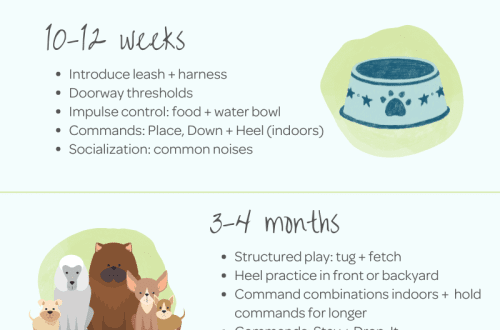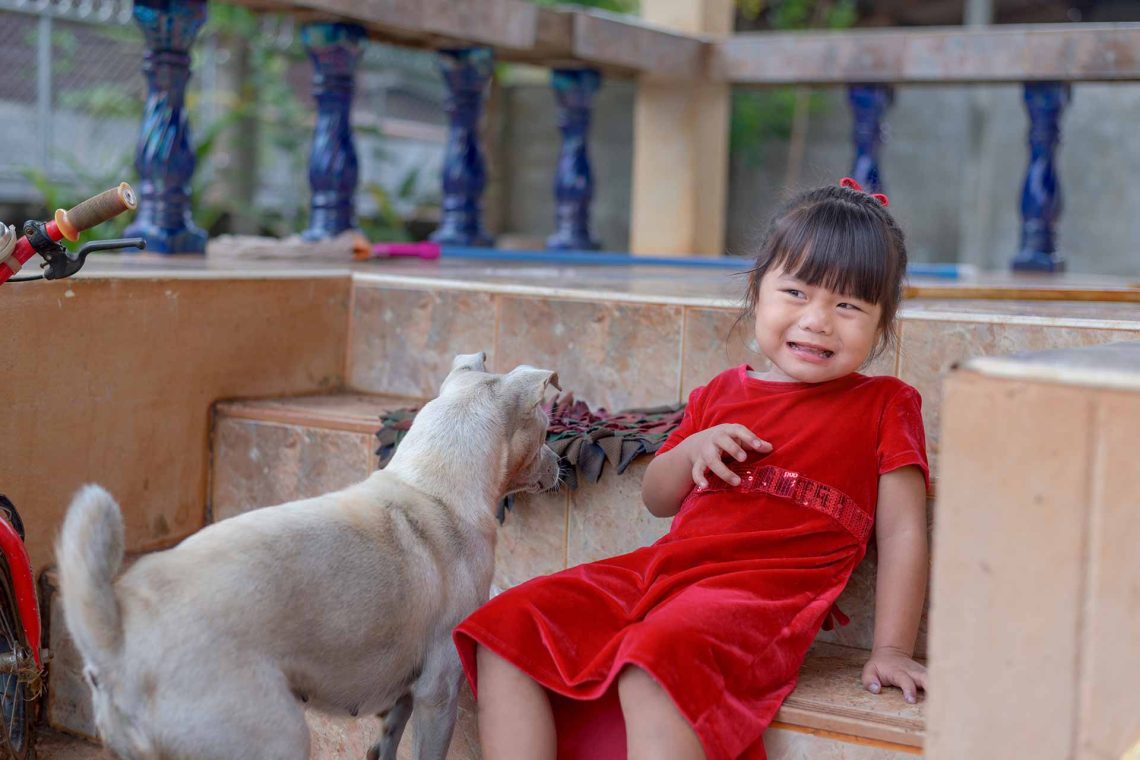
The child is afraid of dogs
Some children are afraid of dogs – someone is just wary, and someone falls into a real tantrum at the sight of a man’s best friend. Why does this happen and what to do if the child is afraid of dogs?
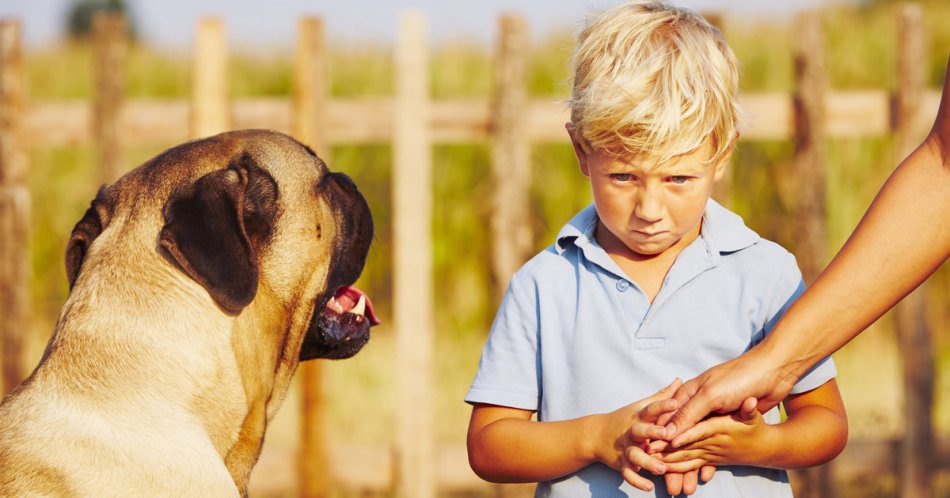 In the photo: the child is afraid of the dog. Photo: huffingtonpost.co.uk
In the photo: the child is afraid of the dog. Photo: huffingtonpost.co.uk
Contents
Why are children afraid of dogs?
Most often, children are afraid of dogs because they were taught this by parents or other family members whose opinion the kids trust. If an adult becomes tense at the sight of a dog, becomes nervous, or even yells at the owner of this dog, the child will copy his actions – and then begin to feel intense fear.
Sometimes adults intimidate children by telling them that the dog “is about to bite!” and even “eat” at all. Children take everything literally and, naturally, are very afraid. Wouldn’t you be scared if a man-eating tiger appeared in front of you?
According to statistics, no more than 2% of children who are afraid of dogs have actually been attacked by them (and this is not necessarily bites). The remaining 98% of phobias are created by loving adults – in most cases, of course, not on purpose, but this does not make it easier for children.
Of course, you need to teach children to be careful about other people’s dogs and with understanding – to their own, but the methods for this should be chosen correctly. There are rules, following which, you will protect the child, but at the same time you will not form a phobia in him.
But what if the phobia has already formed, and the child is terribly afraid of dogs?
What NOT to do if your child is afraid of dogs
There are things that should never be done if your child is afraid of dogs.
- Do not ridicule or ignore a child’s fear. The kid needs help to cope with the phobia.
- You can not call on the child “not to be afraid” and persuade him “to be brave.” This is not only useless, but also harmful, as it completely undermines your child’s self-confidence and makes you feel completely worthless.
- Calling dogs and their owners names, saying that they are “evil, nasty, stupid”, etc. This only increases the fear of your heir.
- Nervously react to the crying or hysteria of children, make them relive fear again and again, talking about meeting with “scary dogs”. Better to just silently hug the heir and then distract him.
- Force events in an attempt to overcome fear – for example, forcibly drag a child screaming in fear to a dog so that he gets to know the frightening object better and understands that there is nothing to be afraid of. As a rule, dads of boys like to do this, convinced that “a real man is not afraid of anything.” Firstly, it is simply dangerous – the dog can get nervous and scare the child even more. Secondly, the baby will not get a positive experience, but, in addition to increasing fear of dogs, you will undermine the child’s confidence in yourself.
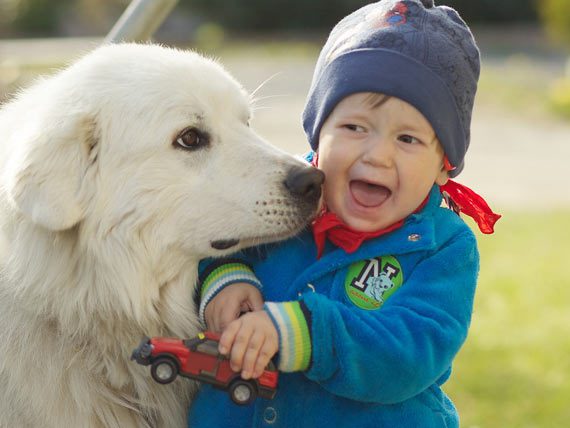
In the photo: the child is afraid of the dog. Photo: petmd.com
What to do if your child is afraid of dogs
Firstly, it is worth figuring out what the fear is connected with: whether it was caused by some events or the parents formed it on their own (and then, first of all, parents need to change).
And sometimes fear is an expression of the “bad” feelings of the child himself, mainly anger. If it is forbidden to correctly express anger and other “bad” feelings in the family, the child may well unconsciously attribute them, for example, to dogs (“they are evil and want to harm me”), and then be afraid of them.
How exactly it is overcome depends on the cause of fears.
Dogs are feared mainly by preschool children. Often by the age of 8 or 9, the panic fear of dogs disappears, but you can help your child cope with it faster and more painlessly.
The saying “Wedge knocked out with a wedge” is also true in relation to the fear of dogs. But in this case, you need to act very carefully, consistently and slowly. You can create a program of steps that will help children get rid of their fear of dogs.
- Read and tell your child fairy tales and stories about dogs and how they help people.
- Watch cartoons about dogs together and then discuss them. Emphasize how good the dogs are and how good it is that they come to the aid of people.
- Draw dogs with your child and then arrange exhibitions of drawings.
- Together compose stories and tales about kind and faithful dogs.
- Buy your child soft toys depicting dogs – but only they should look like real dogs, not people. On toys, you can train to properly interact with dogs.
- Watch movies with dogs and discuss them.
- Play Beast Transformation. It is better if you first act as a dog, and then the child tries on the role of a dog and speaks on her behalf.
- Observe dogs from a safe, comfortable distance for the child and discuss their behavior and body language. It is very important to reduce the distance to the dogs gradually, so as not to frighten the child.
- Interact with friendly yet reserved dogs in a safe environment. The restraint of the dog in this case is no less important than friendliness. After all, if an enthusiastic well-meaning puppy, for example, jumps to lick an unprepared child in the face, all previous efforts to overcome fear may fail.
- If both you and the child are ready for this, you can get a puppy. But be sure to teach your child how to properly interact with the dog and treat it kindly.
Track the reaction of the child and proceed to the next item only when the previous one does not cause anything but positive emotions in the baby.
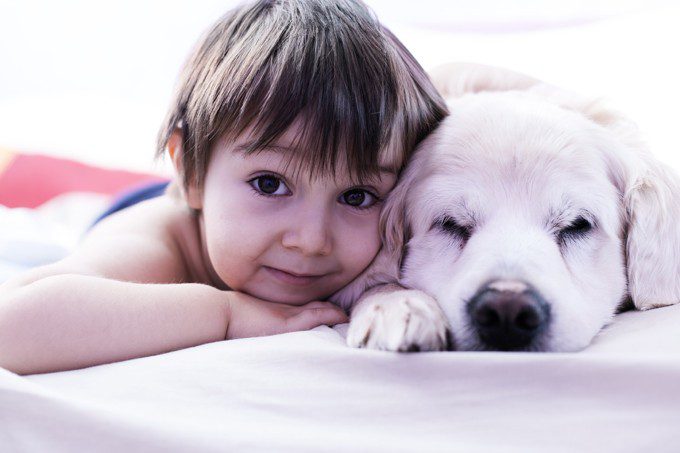
In the photo: a child and a puppy. Photo: dogtime.com
Children and dogs can not only exist on the same planet – they can become best friends! And much (if not all) here depends on you.
If you are not confident in your abilities, you can seek advice from a competent psychologist who will help you and your child overcome fear.




